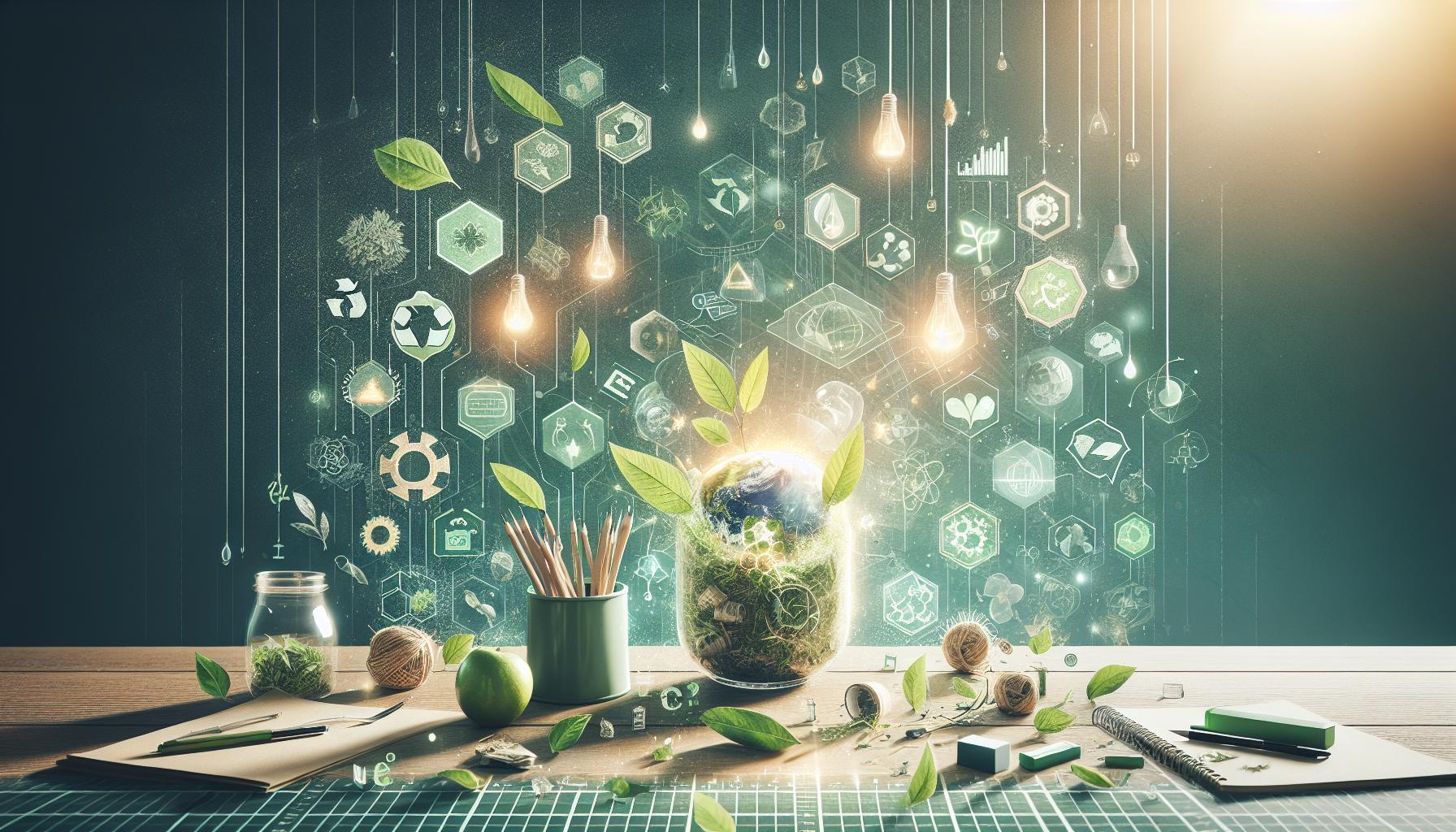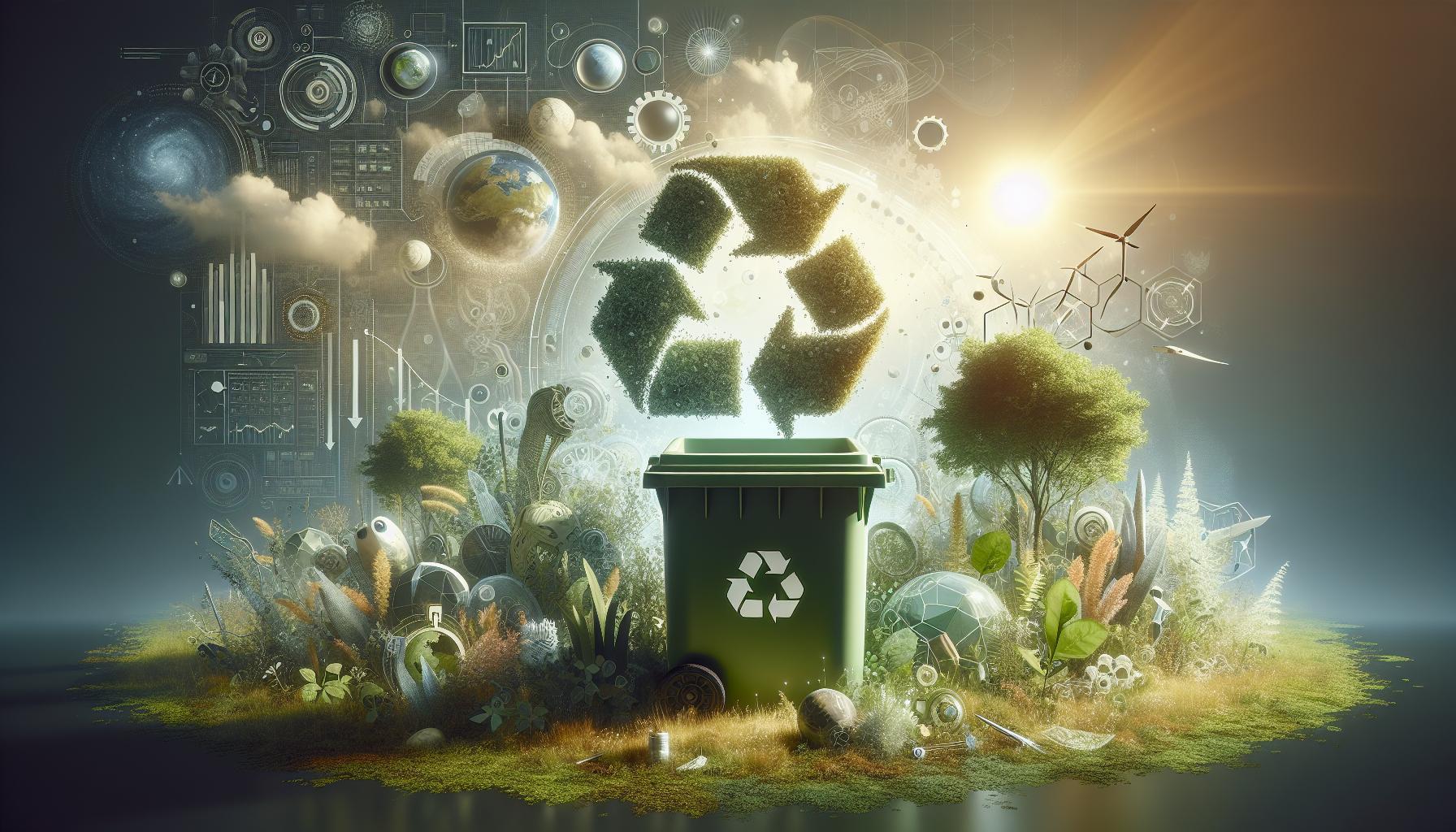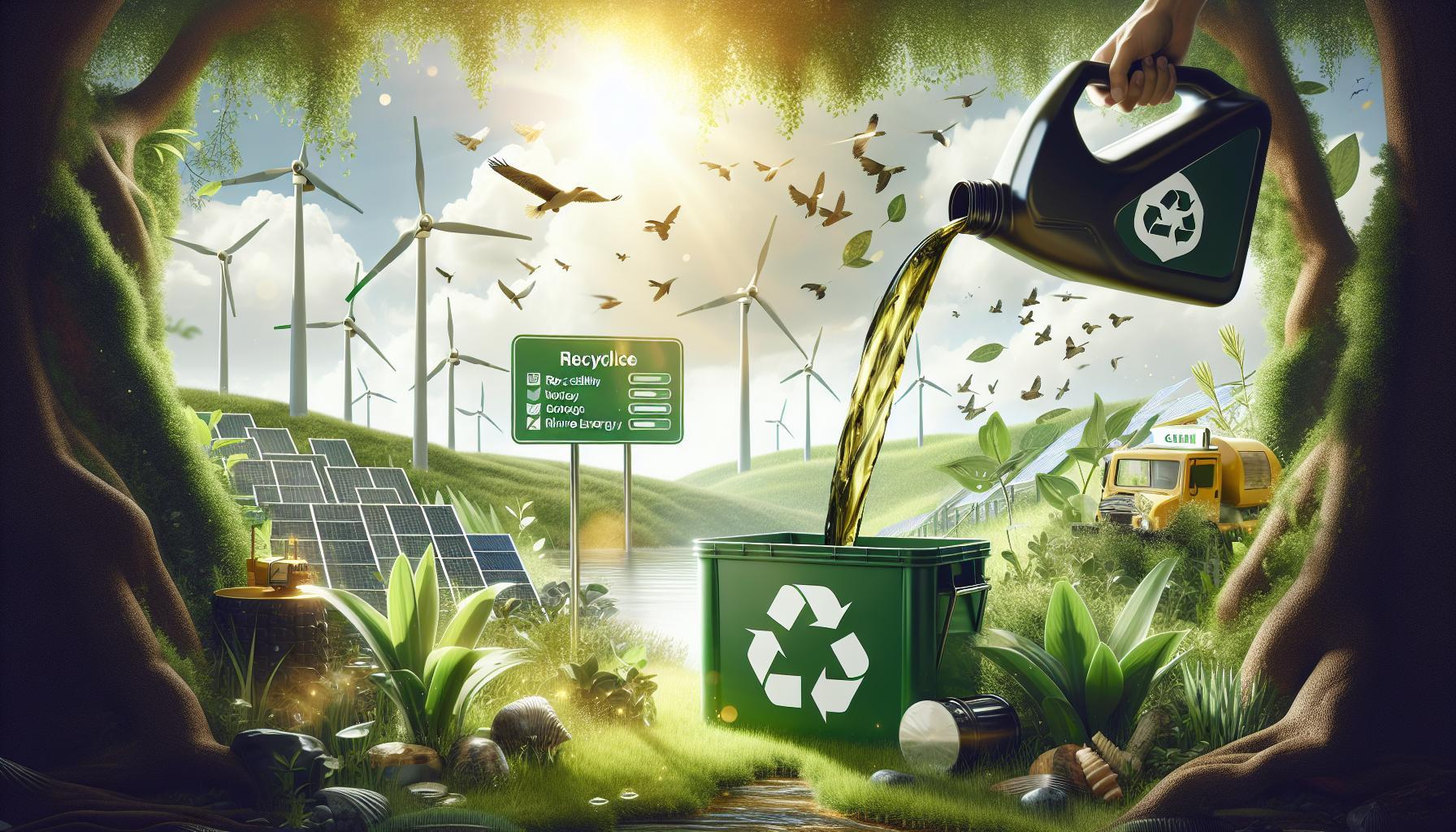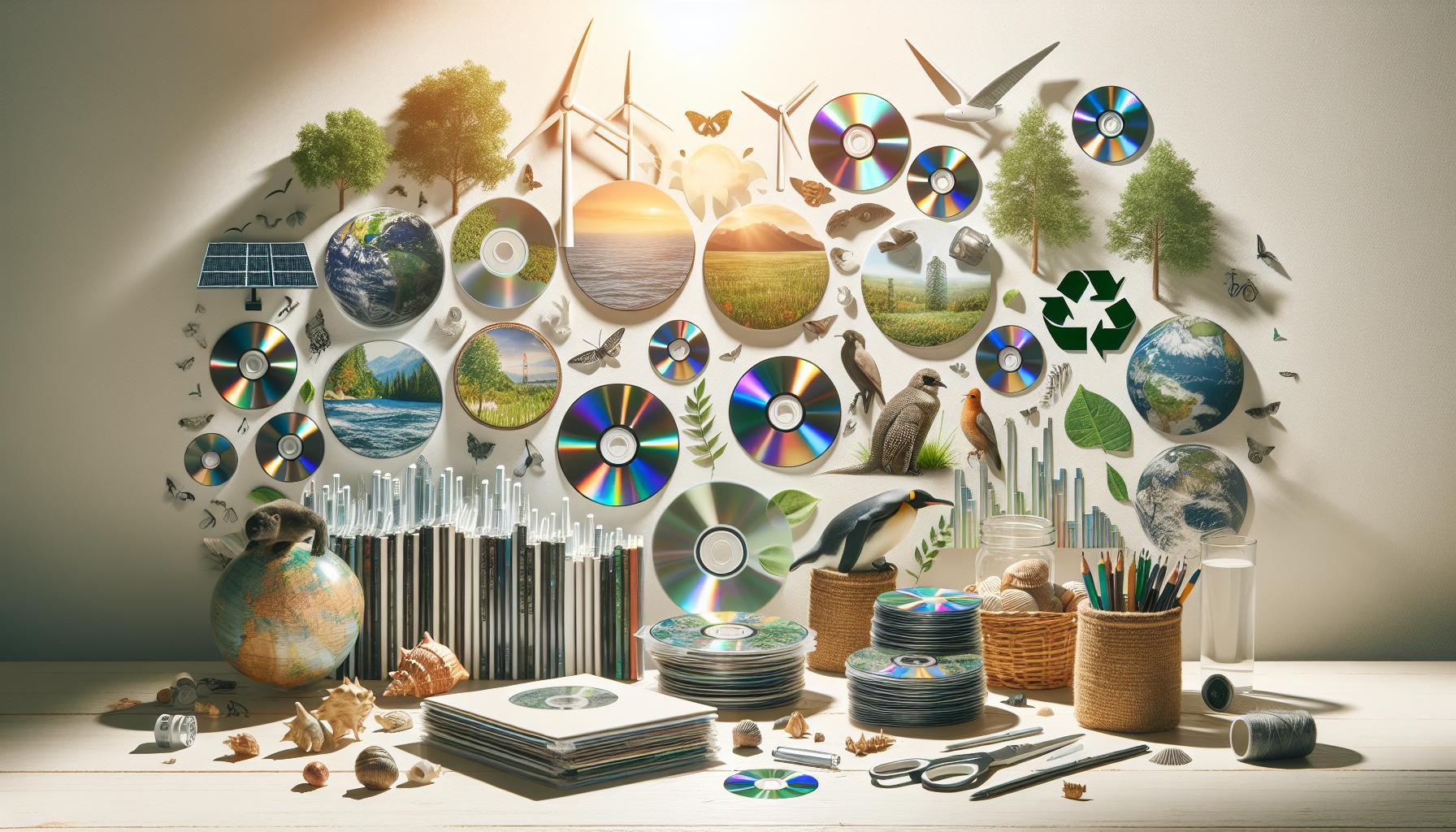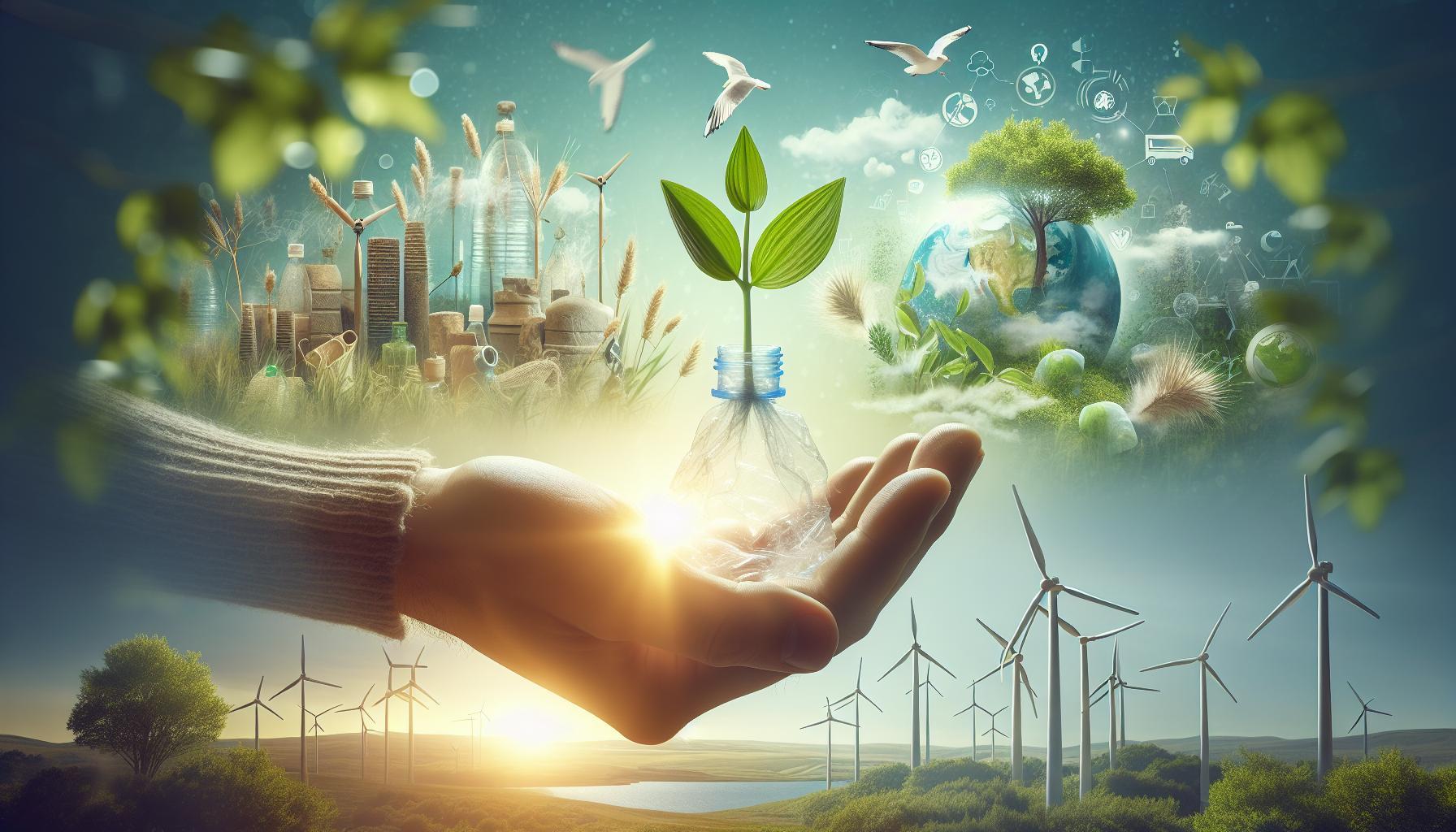Did you know that only about 9% of plastic waste is effectively recycled? With plastic pollution becoming an urgent global issue, understanding the recyclability of different types of plastic, particularly #5 plastic, is crucial. In this article, we will explore whether #5 plastic is recyclable, the challenges involved, and the best practices to enhance recycling efforts in your community.
As you navigate your daily choices, knowing the facts about plastic recycling can empower you to make a positive impact on the environment. From reducing waste in landfills to supporting sustainable consumption, informed actions can drive meaningful change. Join us as we uncover the details surrounding #5 plastic, and discover how you can contribute to a more sustainable future.
Is 5 Plastic Truly Recyclable?
Plastic, particularly the kind labeled as number 5, or polypropylene (PP), is frequently encountered in our daily lives, appearing in items like yogurt containers, straws, and bottle caps. Yet, there remains a cloud of uncertainty surrounding its recyclability. While it is indeed recyclable in many regions, the reality is more nuanced, revealing the complexities of the recycling process and the varied capabilities of waste management systems across different locales.
In an ideal world, all 5 plastic items would have a clear, straightforward path from consumer use to recycling bin to new products. However, the truth is that the recyclability of this plastic often hinges on local facilities’ capabilities. Many curbside recycling programs do accept polypropylene, but not all do, and those that do may face limitations on processing capacity. This inconsistency can lead to misconceptions about 5 plastic’s recyclability. Consumers may find themselves confused and frustrated when their recycling experiences differ from expectations set by labels or marketing.
Challenges in Recycling 5 Plastic
Several challenges complicate the recycling of polypropylene. First, the market demand for recycled PP is not as robust as for other plastics, like polyethylene terephthalate (PET), which is more widely accepted and processed. Additionally, contamination from food residues can render items unfit for recycling, as most facilities require clean materials to ensure the effectiveness of the recycling process. For example, a greasy takeout container can spoil an entire batch of recyclable plastics, leading to further complications in recycling efforts and increased waste.
Furthermore, many communities lack the infrastructure to process 5 plastic efficiently, meaning that even if they accept it, the material may still end up in landfills. This disparity in processing capabilities highlights the importance of consumer awareness and community action in advocating for improved recycling programs and systems.
What You Can Do
For individuals wanting to make a positive impact, there are practical steps to ensure that 5 plastic is being directed toward recycling effectively:
- Research Local Guidelines: Check with your local waste management authorities to understand what types of plastics are accepted in your area.
- Clean Your Containers: Before recycling, ensure that all containers are free of residue. Rinse them with water to avoid contamination.
- Participate in Community Drives: Engage with local recycling initiatives that focus on collecting and properly processing materials that may otherwise be discarded.
- Support Policy Changes: Advocate for policies that improve recycling infrastructure and enhance markets for recycled materials.
In closing, while 5 plastic does have recycling potential, it requires informed consumer behavior and coordinated community efforts to navigate the recycling landscape effectively. By understanding the complexities of plastic recycling and participating in local initiatives, we can collectively work toward a more sustainable future.
Understanding Plastic Codes and Their Meaning
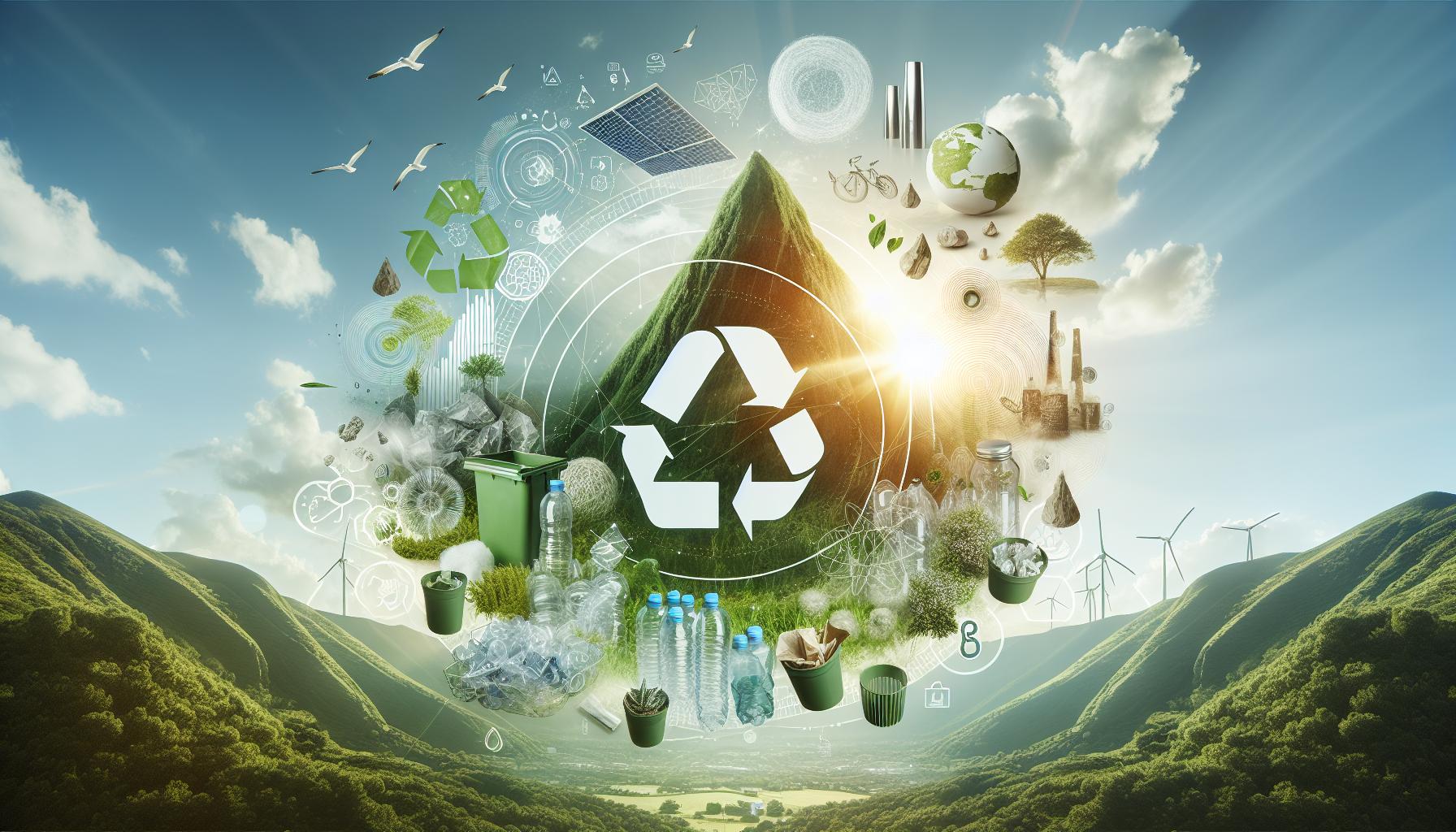
Understanding the various plastic codes can significantly empower consumers to make informed decisions about recycling and waste management. Each plastic type is assigned a recycling code, a number that indicates the material’s composition and recyclability. The code is typically printed on the bottom of products and consists of a number within a triangle of arrows, often referred to as the “mobius loop.” Among these codes, the fifth-marked with the number 5-identifies polypropylene (PP), commonly found in items such as yogurt containers, straws, and bottle caps.
Importance of Plastic Codes
These codes serve several purposes. First, they help consumers identify the material type and provide insights into the resin’s properties, functionality, and usability. For example, polypropylene is known for its durability and resistance to heat, which makes it suitable for food containers and packaging. However, the recyclability of PP often varies by region and local waste management capabilities. Many curbside programs accept polypropylene, but others do not, emphasizing the need for consumers to be aware of their local guidelines.
For effective recycling and waste management, understanding these codes is crucial. Many people mistakenly believe that all plastics are universally recyclable. Realizing that, for instance, containers labeled with code 1 (PET) and code 2 (HDPE) are generally more widely accepted than those labeled with code 5 can influence purchasing and disposal decisions.
How Consumers Can Use This Information
To make a positive impact, consumers should take the initiative to:
- Check Local Guidelines: Research what plastics are accepted in local recycling programs to avoid contaminating recyclables.
- Learn the Codes: Familiarize oneself with the different plastic codes and their meanings to make informed choices when shopping.
- Advocate for Better Infrastructure: Support local measures to improve recycling facilities and enhance the capabilities to handle a wider range of plastics, including polypropylene.
By understanding the significance of plastic codes, individuals can better navigate the complexities of recycling, ensuring that they play an active role in promoting sustainability and reducing plastic waste in their communities.
The Processing Journey of 5 Plastic
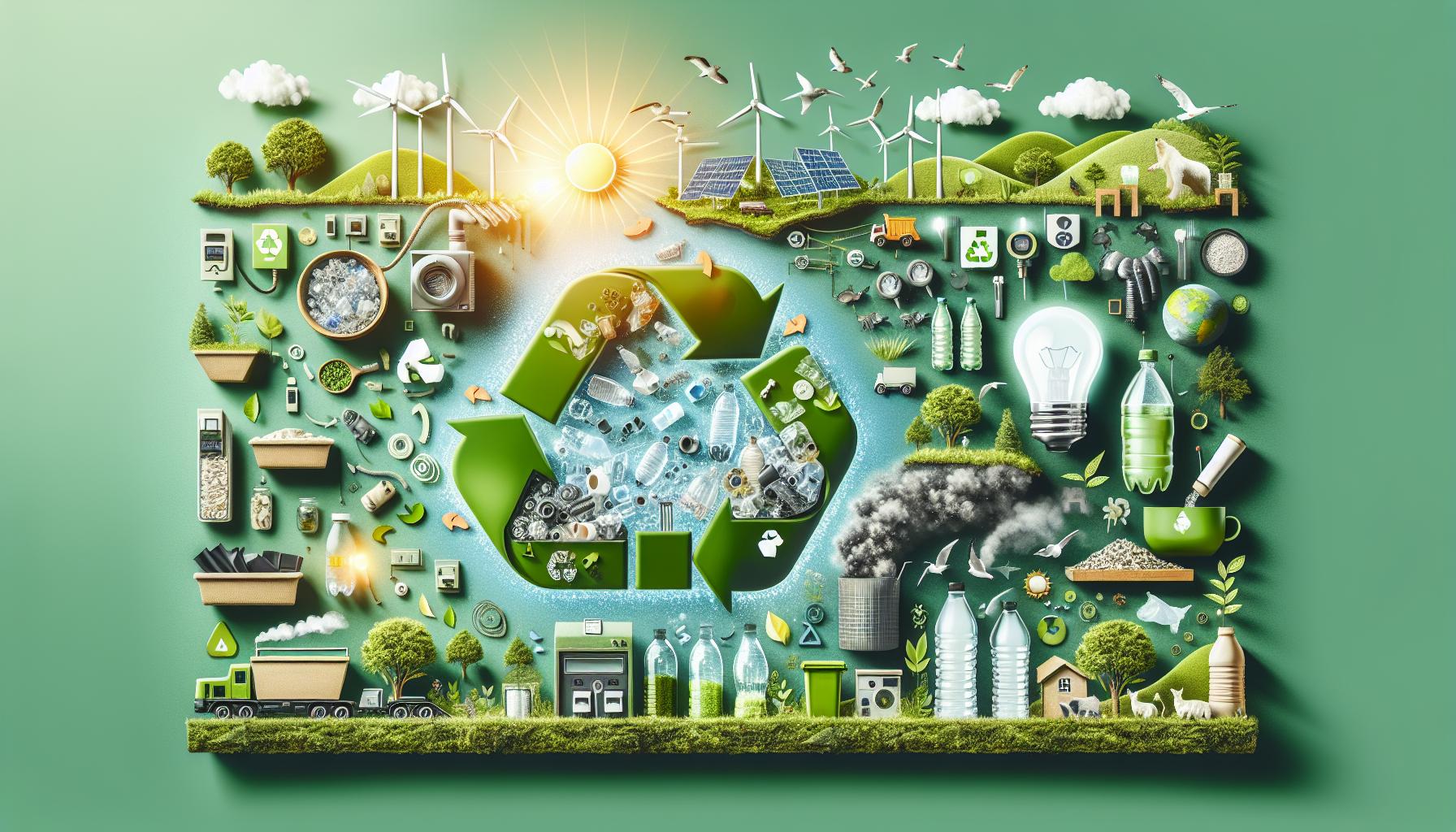
The journey of polypropylene (5 plastic) from waste to reusable material is often complex and laden with challenges. When polypropylene products are discarded, they enter a recycling system that varies significantly depending on local infrastructure and public awareness. Unlike more accessible plastics like PET (code 1) or HDPE (code 2), which have established recycling processes, polypropylene faces hurdles due to its lower demand in the recycling markets and the intricacies involved in its processing.
Initially, the collected polypropylene goes through sorting, where recyclables are separated from non-recyclables. Advanced facilities utilize technology such as infrared sensors to identify and sort different types of plastics effectively. However, this system is not foolproof; contamination from other materials can hinder the recycling process, making it crucial for consumers to ensure that only designated plastics enter the recycling bin.
Once sorted, the polypropylene is cleaned to remove contaminants such as food residue or labels. This cleaning process is essential, as it prepares the plastic for the next steps in recycling. After cleaning, the plastic is shredded into small pieces, which are then melted down and reformed into pellets. These pellets can then be used to manufacture new products, such as automotive parts, fiber for textiles, or even new containers, thus closing the loop on material usage.
However, despite these processes, challenges remain. The market’s fluctuating demand for recycled polypropylene and limited capabilities of local recycling centers can leave much of this plastic unprocessed. Thus, collaboration between manufacturers, consumers, and policymakers is vital in enhancing recycling infrastructure and increasing the demand for recycled materials. By making informed choices about plastic use and advocating for robust recycling programs, consumers can play a crucial role in ensuring that the recycling journey of polypropylene is more effective and sustainable.
Environmental Impact of 5 Plastic Waste
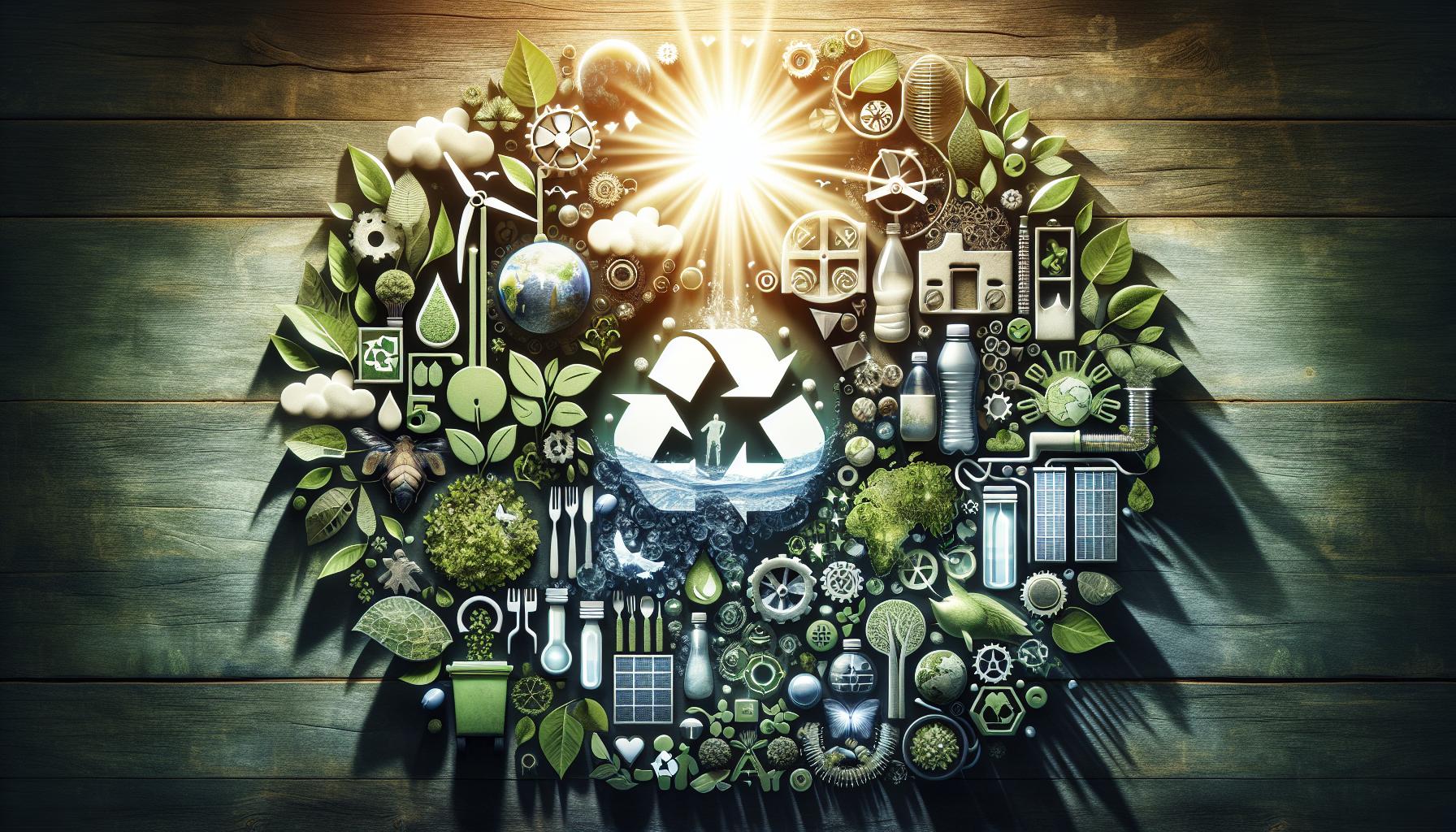
Plastic waste, particularly from polypropylene (5 plastic), poses significant environmental challenges due to its long decomposition timeline and potential to contribute to pollution if not managed properly. While polypropylene is widely used in various products, from food containers to automotive parts, its recyclability is hampered by limited infrastructure and market demand, leading to increased accumulation in landfills and natural habitats. Understanding the environmental impact of this waste is crucial for initiating effective change.
When polypropylene waste is not recycled, it contributes to a host of environmental issues. Plastics take hundreds of years to decompose, and during this period, they can break down into microplastics, which are detrimental to ecosystems and can enter the food chain, affecting wildlife and human health. Moreover, the production of new plastics from fossil fuels releases greenhouse gases, exacerbating climate change. Reducing reliance on virgin plastics by recycling existing materials like polypropylene is essential in mitigating these impacts.
To combat the challenges associated with plastic waste, communities and individuals can adopt several best practices. One effective approach is to advocate for and participate in local recycling programs that accept polypropylene, thus increasing the likelihood of its recovery and reprocessing. Furthermore, raising awareness about the importance of proper disposal methods can help reduce contamination in recycling streams. Here are some actionable steps for individuals:
- Educate yourself and your community: Share information about the recyclability of plastics and the importance of proper waste separation.
- Support products made from recycled materials: Opt for products that utilize recycled polypropylene, promoting market demand for recycled plastics.
- Participate in local clean-up events: Engage in activities that help remove plastic waste from natural areas, reducing environmental harm.
Ultimately, taking collective action can help ensure that the journey of polypropylene from waste to new products becomes more effective. By emphasizing the importance of recycling and sustainable practices, we can foster a more resilient environment while reducing our carbon footprint and promoting healthier ecosystems.
Best Practices for Recycling Plastic 5
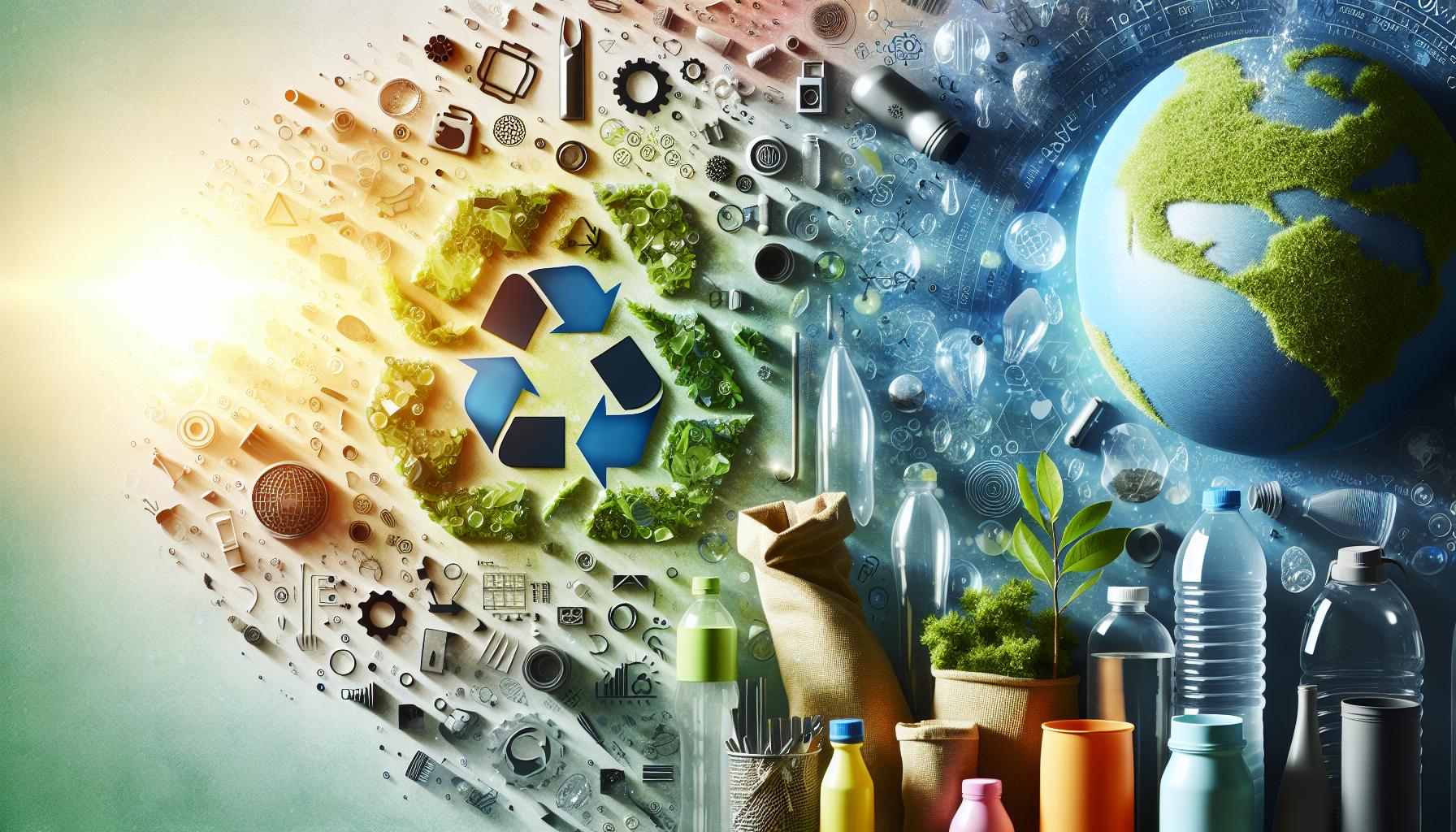
Did you know that only 9% of the world’s plastic is ever recycled? This statistic underscores the urgent need for better practices when it comes to recycling plastic, specifically polypropylene, often marked with the number 5. By adopting effective strategies for recycling this type of plastic, individuals and communities can play a pivotal role in reducing waste and fostering a more sustainable future. Here are several actionable best practices that you can implement to enhance the recycling of 5 plastic.
Know Your Recycling Options
Understanding local recycling guidelines is the first step towards effective recycling of polypropylene products. Not all recycling facilities accept 5 plastic, due to varying regional regulations. Check with your local waste management authority or visit their website to determine whether they process this type of plastic. If not, look for nearby facilities or registered drop-off points that do accept polypropylene. Your efforts can make a world of difference in the recycling stream.
Clean and Sort Properly
Before placing plastic 5 items in the recycling bin, it’s crucial to clean them thoroughly. Contaminants like food residues can hinder the recycling process and lead to entire batches being sent to landfills. A quick rinse with water is usually sufficient. Also, ensure to sort your recyclable materials according to your local regulations to prevent contamination with non-recyclable items.
Support Innovative Recycling Initiatives
Many communities have begun to implement innovative recycling programs that focus on polypropylene recovery. Look for initiatives that emphasize the circular economy, where recyclable materials are reintroduced into production. Supporting local businesses that use recycled polypropylene in their manufacturing can help create a robust market for recycled materials and promote sustainability.
Educate and Advocate
Raising awareness within your community about the importance of recycling and the nuances associated with 5 plastic can lead to greater participation in recycling programs. Host workshops or informational sessions that highlight best practices for recycling, or collaborate with local schools to educate students on the significance of reducing plastic waste. When communities come together, they can spark broader change.
Implementing these best practices can significantly reduce the footprint of plastic in your area and contribute to healthier ecosystems. By becoming proactive participants in the recycling process, you not only enhance the recyclability of polypropylene but also inspire others to advocate for sustainable waste management practices.
Common Myths About Recycling Plastic
Misunderstandings about plastic recycling can lead to apathy and inaction, particularly concerning polypropylene, or 5 plastic. Despite its widespread use in everyday items like yogurt containers and straws, many myths obscure the path to effective recycling. It’s crucial to demystify these misconceptions to foster better recycling habits within our communities.
One pervasive myth is that all plastics marked with a recycling code are equally recyclable. In reality, the recycling ability of plastics varies significantly. While 5 plastic is technically recyclable, many facilities do not accept it due to local market limitations or the cost of processing. Therefore, it’s essential to confirm with your local recycling program about what plastics they accept, rather than assuming all items with the recycling code are welcome.
Another common belief is that cleaning recyclables is unnecessary. On the contrary, food residue can contaminate entire batches of recycling, rendering them worthless. It’s essential to rinse out containers and ensure they are free of contaminants before tossing them in the recycling bin. Even a small amount of leftover food can lead to an entire load being sent to a landfill instead of being processed. Taking the time to properly clean and sort your recyclable items is a crucial step that can enhance the effectiveness of recycling programs in your area.
Additionally, many consumers think that recycling is the solution to their plastic consumption problems. While recycling is vital, it should not be the only path considered. Reducing the use of single-use plastics in the first place is equally, if not more, important. Prioritizing reusable options and supporting products made from recycled materials contributes to a more sustainable economy and reduces the demand for new plastic production.
By dispelling these myths and embracing best practices, we can create a culture of responsible recycling that encourages community collaboration and individual accountability. Empowering ourselves with accurate information not only enhances our efforts in managing plastic waste but also contributes to a cleaner, healthier planet for future generations.
How to Identify 5 Plastic Items
Identifying whether a plastic item is made from polypropylene, or plastic #5, can help consumers make informed decisions about recycling and waste management. Polypropylene is commonly used in a variety of household items, and understanding where to find it is the first step in responsible disposal. Look for the recycling symbol with the number 5 inside; it may be located on the bottom of containers, but it might blend in with other markings, so keep an eye out.
Common Items Made from Plastic #5
- Food Containers: Many take-out food containers, yogurt tubs, and deli containers are made from polypropylene.
- Straws and Cutlery: Disposable straws, forks, and spoons are often composed of plastic #5.
- Bottles and Jugs: Some bottles, especially those for certain household products, can be made from #5 plastic.
- Plastic Lids: The lids of many food containers, including those for jars and bottles, are typically made with this material.
When you’re sorting your recyclables, it’s essential to confirm with your local recycling program whether they accept #5 plastics. This information varies by region and facility; while technically recyclable, many places may not collect it due to cost and market demand, resulting in it heading to the landfill instead. Knowing the specifics of your local program empowers you to recycle effectively and reduce contamination in the waste stream.
In addition to identifying and sorting these items correctly, consider the lifecycle of the products you choose. Opt for reusable containers when possible to minimize single-use plastics and support businesses that prioritize sustainable practices. Engaging in discussions with community members about recycling habits can also foster awareness and collective responsibility, leading to healthier environmental practices in your neighborhood.
Alternatives to 5 Plastic Products
Transitioning away from #5 plastics opens the door to a plethora of sustainable alternatives that not only reduce waste but also promote environmental stewardship. Many common household items made from polypropylene can be replaced with eco-friendly materials that are either reusable, biodegradable, or recyclable in more accepted categories. By making intentional choices, consumers can significantly diminish the impact of plastic waste on our planet.
Eco-Friendly Alternatives to Plastic #5
- Glass Containers: For food storage and leftovers, glass jars and containers are excellent alternatives. They are durable, non-toxic, and fully recyclable without degradation of quality.
- Stainless Steel Products: Reusable drink bottles, containers, and cutlery made from stainless steel can replace disposable plastic versions. This material is not only long-lasting but also free from harmful chemicals often found in plastics.
- Biodegradable Packaging: For take-out, many restaurants are adopting biodegradable containers made from materials like bagasse (sugarcane fiber), bamboo, or compostable plastics that break down more easily in the environment.
- Bamboo Utensils: As a renewable resource, bamboo provides a sustainable option for cutlery and straws, significantly reducing reliance on single-use plastic products.
- Cloth Bags: Replacing plastic bags with reusable fabric alternatives not only reduces plastic waste but also promotes sustainable shopping habits.
Community and Corporate Initiatives
Communities and corporations are increasingly recognizing the importance of moving towards sustainable alternatives. Many grocery stores are now offering bulk bins to encourage consumers to bring their containers, minimizing plastic packaging. Local initiatives, such as “plastic-free” weeks and events promoting zero waste lifestyles, empower individuals to collectively redefine consumption habits and embrace alternatives.
Moreover, businesses are innovating in packaging solutions, sourcing sustainable materials, and even leading campaigns to educate customers on the impacts of plastic waste. Joining these initiatives or creating local partnerships can elevate a collective movement towards reducing #5 plastics, amplifying the positive impact on the environment.
Adopting these alternatives not only helps in diminishing the demand for #5 plastics but also creates ripples of change that inspire others to assess their consumption choices. By making small, mindful adjustments in daily habits, every individual can contribute to a more sustainable future.
Innovative Solutions for Recycling Challenges
Innovative technologies are emerging to tackle the recycling challenges posed by #5 plastics, which are often difficult to process effectively. Polypropylene, commonly used in various consumer items, can be poorly recycled due to contamination and a lack of infrastructure. However, several advancements show promise in improving recycling rates and addressing the specific barriers associated with polypropylene.
One of the most compelling solutions lies in advanced sorting technologies. These systems utilize machine learning and artificial intelligence to accurately identify and categorize plastics, including #5 materials. By improving the sorting process, recyclers can ensure a higher purity rate in collected plastics, making it more feasible to re-enter the recycling loop. This not only enhances the efficiency of the recycling process but also reduces contamination that often leads to non-recyclable waste.
In addition to sorting technologies, chemical recycling is also gaining traction. Unlike traditional mechanical recycling that breaks down plastic into its base form, chemical recycling involves breaking plastics down on a molecular level, allowing for the recovery of valuable monomers. This process can regenerate high-quality polypropylene from post-consumer products, thus overcoming challenges related to the degradation and quality loss that typically accompany multiple recycling iterations. Companies innovating in this space include those that convert used plastics into feedstock for new plastic production, effectively closing the loop.
Moreover, community engagement through education and local initiatives plays a crucial role in innovative recycling solutions. Empowering consumers to understand proper recycling practices can significantly improve the quality of materials collected. Educational programs that inform citizens about the sorting process and proper disposal techniques help reduce contamination at the source, making recyclables more viable for processing.
By embracing these innovative approaches, stakeholders from businesses to individuals can collectively enhance the recycling ecosystem for polypropylene. The integration of technology, education, and community action not only addresses current recycling challenges but also paves the way for a more sustainable circular economy, encouraging responsible consumption and disposal of #5 plastics.
The Role of Consumers in Plastic Recycling
As awareness of environmental issues grows, has never been more crucial. Individual actions can significantly impact how effectively #5 plastics, or polypropylene, are recycled. Since consumers generate a large portion of plastic waste, their engagement in recycling initiatives is vital for improving the overall system. Understanding proper recycling practices, such as ensuring items are clean and free of contaminants, can noticeably increase the success rate of recycling efforts.
Empowering Consumers Through Education
Knowledge is power when it comes to effective recycling. Many consumers are unaware of the specifics regarding what can be recycled, leading to contamination that makes entire batches of recyclables unfeasible for processing. Educational initiatives that promote awareness about proper recycling-such as cleaning containers and checking local guidelines-can transform how materials like #5 plastics are handled. These programs can also clarify common myths about recycling, enabling individuals to make informed decisions.
Additionally, consumers can engage with local initiatives that promote recycling and waste reduction. Many communities run programs that encourage residents to participate in clean-up efforts or host workshops that teach sustainable practices. For example, participating in local recycling drives or using digital platforms to exchange ideas about effective waste management can foster a sense of community and shared responsibility. Such initiatives not only benefit the environment but also create social bonds, highlighting the importance of collective action.
Shaping the Future with Conscious Choices
Consumers have the power to influence market trends by choosing products that are designed for recyclability. Seeking out brands that prioritize sustainable packaging can compel manufacturers to adopt more eco-friendly practices. Moreover, advocating for transparency regarding the recyclability of products helps create a culture of accountability. By supporting businesses that innovate in sustainable packaging and efficient recycling processes, consumers not only reduce their waste footprint but also encourage broader systemic change.
In summary, consumers play an indispensable role in enhancing the recycling ecosystem for #5 plastics. By understanding their impact, participating in local initiatives, and making informed choices, they not only improve recycling rates but also contribute to a more sustainable circular economy. The collective efforts of individuals can lead to significant changes in how society manages plastic waste, making every small action a step toward a healthier planet.
Community Initiatives for Effective Recycling
Building a sustainable future requires collaboration and an active commitment to change at the community level. Local initiatives targeting recycling, particularly for materials like #5 plastic, not only improve recycling rates but also foster a shared sense of responsibility among residents. For instance, many neighborhoods are establishing “Recycling Champions” programs, where volunteers educate their fellow community members about recycling best practices and run workshops focusing on effective ways to reduce waste. These champions often find innovative solutions tailored to the unique challenges faced by their communities, illustrating that local engagement can lead to significant environmental benefits.
Successful Community Models
Cities around the world are implementing various recycling initiatives that can serve as models for others. For example, in San Francisco, the “Zero Waste by 2030” goal has transformed public engagement with recycling through a combination of ordinance, education, and outreach. In this program, the city provides comprehensive guides on what materials can be recycled, including #5 plastics, and organizes regular community clean-up events that encourage participation and stewardship of local environments. This comprehensive approach ensures that even the most reluctant recyclers feel empowered to contribute.
Similarly, partnerships between schools and local government can have a profound impact. Educational programs designed for children not only equip them with knowledge about the importance of recycling plastics but also inspire them to engage their families. Programs like “Plastic Free Schools” emphasize the reduction of single-use plastics and encourage schools to recycle effectively. These grassroots movements often lead to community-wide actions, demonstrating the ripple effect of fostering recycling habits from a young age.
Creating Awareness through Events and Collaborations
Engaging the community through events is another effective way to promote recycling. Organizing local recycling drives specifically targeting #5 plastics encourages residents to bring in their materials for appropriate disposal. These events can serve as a platform for education, as local experts often provide information on how to properly recycle and the impacts of improper disposal. Furthermore, partnerships with local businesses can enhance these events by offering incentives such as discounts for individuals who bring in recyclable materials, thereby creating a culture of recycling as part of everyday life.
The importance of social media cannot be underestimated in these initiatives. Platforms can serve as invaluable tools for spreading awareness and mobilizing community action by sharing success stories, tips, and upcoming events. Creating local hashtags and encouraging residents to share their recycling efforts can build a sense of pride and encourage more community members to participate.
By harnessing the power of community initiatives, the challenges of recycling #5 plastics can become opportunities for growth and positive change. Through education, collaboration, and local engagement, communities can significantly improve their recycling rates, contributing to a healthier environment for all.
Future Trends in Plastic Recycling and Sustainability
As the global conversation around plastic waste continues to evolve, innovative solutions and emerging trends are reshaping the landscape of plastic recycling, particularly regarding item #5 plastics, known as polypropylene. With increased awareness of sustainability and regulatory pressures, industries are recognizing the imperative to develop more effective recycling methods and sustainable practices. This is not just about recycling; it is about transforming our relationship with materials throughout their lifecycle.
Advancements in Recycling Technologies
New technologies are playing a pivotal role in enhancing the recyclability of #5 plastics. Chemical recycling, for instance, is gaining traction as a viable method for processing materials that are traditionally difficult to recycle. Unlike mechanical recycling, which can degrade the quality of plastic, chemical recycling breaks down plastics into their original monomers, allowing them to be reused to create new, high-quality products. This process can significantly increase the recycling rates of polypropylene, reducing the volume that ends up in landfills.
Regulatory Changes and Industry Collaboration
Moreover, regulatory frameworks are adapting to encourage circular economy practices. Governments worldwide are beginning to impose stricter regulations on plastic usage and waste management. This shift is prompting collaboration across sectors, as companies are increasingly engaging in cooperative initiatives to streamline recycling processes and promote sustainable practices. For example, brands are exploring take-back programs where consumers can return products made from #5 plastics for responsible recycling.
- Consumer Engagement: Education campaigns are appearing, aimed at informing consumers about the recyclability of #5 plastics, thereby empowering them to make informed choices.
- Product Innovation: Manufacturers are focusing on creating products designed for recyclability, which includes minimizing the use of contaminated materials and optimizing packaging designs.
Community-Driven Solutions
Community initiatives are also pivotal to advancing plastic recycling efforts. Local organizations are developing grassroots campaigns that promote awareness and involvement in recycling initiatives. These programs often include workshops and materials collection drives, making it easier for residents to participate in recycling efforts. As communities engage, they become crucial allies in the push towards sustainability, collectively striving toward a circular economy.
The future of recycling #5 plastics hinges on a multifaceted approach that combines technology, industry collaboration, regulatory support, and community engagement. By adopting these strategies, society is not only addressing the immediate challenge of plastic waste but is also paving the way toward a more sustainable and responsible future for material consumption. As consumers and communities become more proactive, the ripple effects can lead to significant improvements in recycling rates, ultimately benefiting both the environment and the economy.
FAQ
Q: Is plastic #5 recyclable?
A: Yes, plastic #5, also known as polypropylene, is recyclable. Many municipalities offer recycling for this type of plastic, but it’s essential to check local guidelines before recycling. Look for recycling symbols on containers, and ensure they are clean and free of food residue for best results.
Q: What can I do with plastic #5 items if they aren’t accepted in recycling?
A: If your local recycling program does not accept plastic #5, consider reusing or upcycling the items. For example, polypropylene containers can be used for storage, gardening, or crafting projects. Alternatively, check if there are local programs or stores that collect these plastics for specialized recycling.
Q: Why is plastic #5 not widely recycled?
A: Plastic #5 is less commonly recycled due to limited processing facilities for polypropylene compared to other plastics like PET (#1) or HDPE (#2). This leads to lower economic incentives for recycling programs, making it crucial for consumers to advocate for better recycling solutions in their communities.
Q: How can I identify if a plastic item is #5?
A: Look for a recycling triangle with the number 5 inside it, typically printed on the bottom of the container. This symbol indicates that the item is made from polypropylene. Familiarizing yourself with these labels helps you sort recyclables correctly.
Q: Are there any innovations in recycling plastic #5?
A: Yes, technological advancements in recycling processes are improving the ability to recycle plastic #5. Innovations include chemical recycling methods that break down polypropylene into its original components, which can then be reused to produce new plastic products. Stay informed about local initiatives that use these technologies.
Q: What alternatives to plastic #5 are more sustainable?
A: Alternatives to plastics like polypropylene include biodegradable materials such as plant-based plastics, glass, and metals. These alternatives generally have a lower environmental impact, offering sustainable options for packaging and storage. Always consider the lifecycle of the material when making choices.
Q: How can I properly recycle polypropylene?
A: To recycle polypropylene effectively, first empty and clean containers to remove any food residues. Check with your local recycle guidelines to confirm they accept plastic #5. Then, place the clean items in your recycle bin. Alternatively, consider bringing them directly to a recycling center that processes polypropylene.
Q: What are the environmental impacts of plastic #5?
A: While plastic #5 is generally more durable than some other plastics, it presents challenges in waste management. Improperly disposed polypropylene can contribute to pollution and wildlife hazards. Promoting recycling and reusability can mitigate these impacts, making responsible consumer habits crucial for environmental sustainability.
By addressing these common queries, readers can better understand the relevance and recyclability of plastic #5, leading to informed choices that positively impact the environment. For further insights, read more about sustainable practices in our main article.
Future Outlook
As we’ve discovered, understanding whether #5 plastic is recyclable is crucial for making informed choices that benefit both your community and the planet. Remember, while many facilities accept this type of plastic, your local recycling rules are what truly matter. Don’t let confusion hold you back-take action today by checking your local guidelines and committing to responsible recycling practices.
Curious to delve deeper into sustainability? Explore our articles on “The Life Cycle of Plastics” and “How to Reduce Plastic Waste at Home” to enhance your knowledge and impact. Plus, don’t forget to subscribe to our newsletter for the latest insights and strategies in eco-friendly living delivered straight to your inbox.
Your participation can drive change! Share your thoughts in the comments below or connect with like-minded individuals on our social platforms. Together, we can create a cleaner, greener future. Let’s make informed choices today for a healthier tomorrow!

